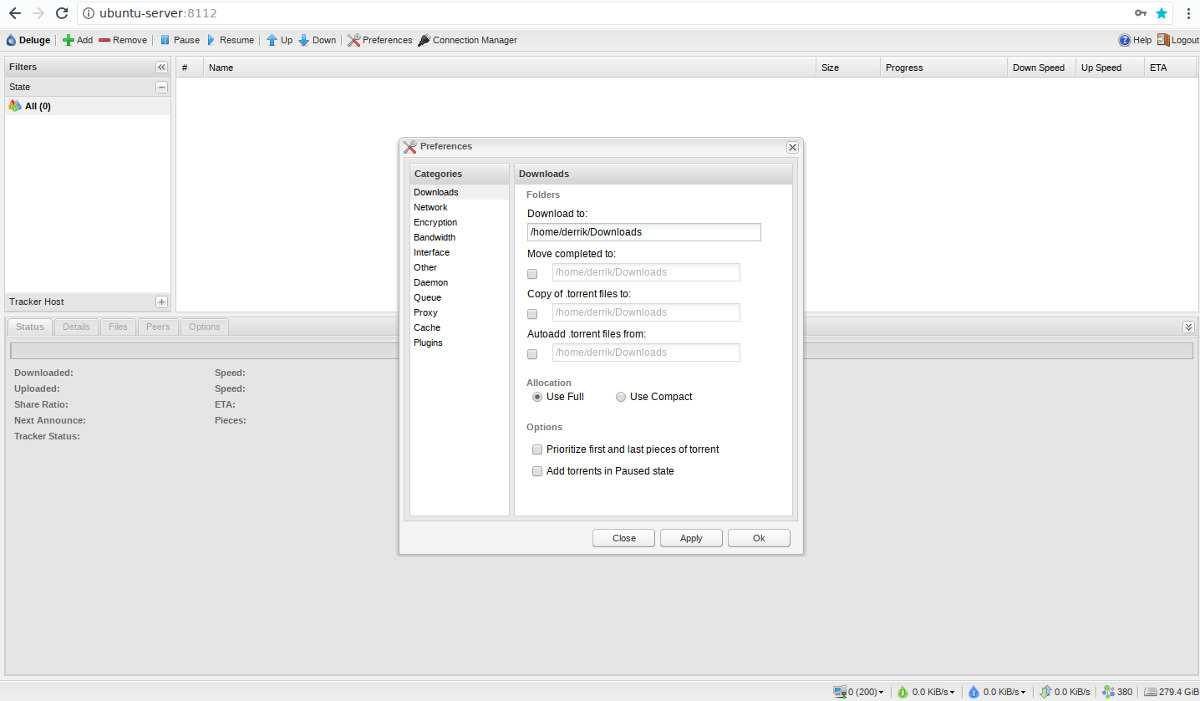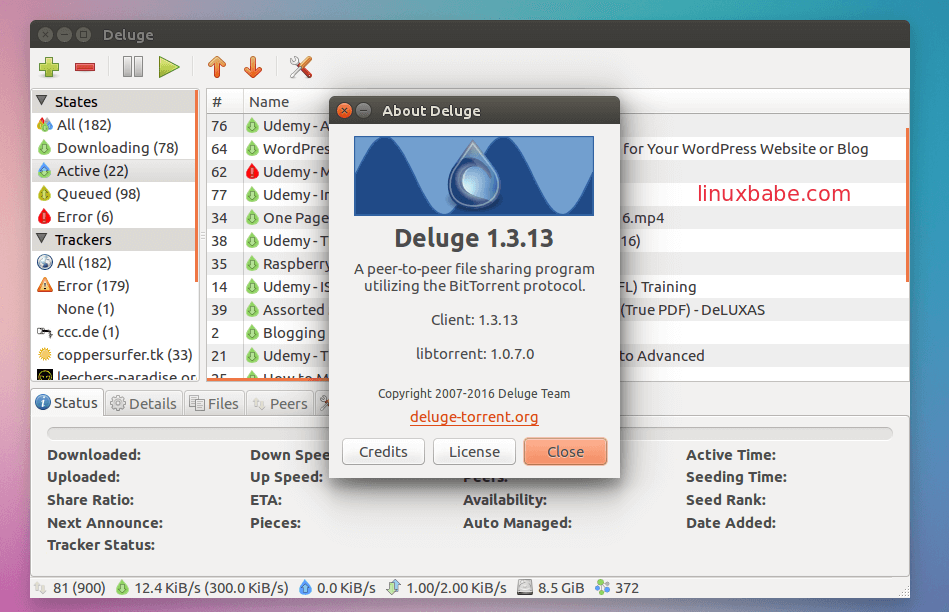

To connect to a remote daemon use the connect command in deluge-console:įor adding torrents directly to the daemon through automatic methods such as with autodl-irssi:ĭeluge-console "connect add $(TorrentPathName) exit" If accessing a local deluged daemon run the following and it will connect automatically: Optional step: Expand Options and select ' Automatically connect to selected host on startup' and ' Do not show this dialog on start-up'.Ĭongratulations! You can now access the Deluge daemon, deluged, on the server via the GTK UI. If this was successful a green tick should now appear as the status for the daemon you just added.Ĭlick on Connect and the Connection Manager should disappear.
#HOW TO CONNECT TO DELUGE USING DELUGE CLIENT PASSWORD#

The Deluge GTK UI setup require switching the GTK UI from Classic mode to Thin-client mode, then adding and connecting to the remote daemon on the server. The workaround is to replace the localclient line in your user config auth file ( ~/.config/deluge/auth) with the localclient line from the deluged config auth file e.g. This is due to the client automatically authorising using the localhost line in the auth file, which is assumed to be at the same config location as deluged.

your login user is user and deluged is running as deluge, you may be unable access to deluged. When attempting to access a daemon deluged on the same machine but running as a different user e.g. You will need to know the server's IP address for configuring clients, for private IP: hostname -I or public IP: curl Ĭongratulations! The server is now setup for remote client access.Ĭlient Setup Accessing deluged service with local UI Client (If using a service substitute appropriate operating system commands):Īlternatively you can edit nf ( deluged must not be running) in the config and change allow_remote from false to true. lient.html The problem is due to default config location based on the running user so another way to solve it by copying your auth file (or just the localclient line) from the service users config to the users config that is running the script which will also enable deluge-console to work. To create the config directory and populate with the default files, run and then stop deluged. To debug any problems setting up deluged enable logging and check for errors. Substitute any daemon start or stop commands below with the appropriate service commands. See the service guides to run deluged as a service so that it starts/stops on server boot/shutdown. The Deluge daemon deluged and deluge-console should be installed on the server. Both the Deluge client and daemon need to be the same major versions, i.e.Accessing deluged service with local UI Clientĭeluge can be setup in such a way that a Deluge daemon, deluged, can be setup on a central computer, server, which can then be accessed and controlled by other computers, clients, using one of Deluge's UIs.


 0 kommentar(er)
0 kommentar(er)
